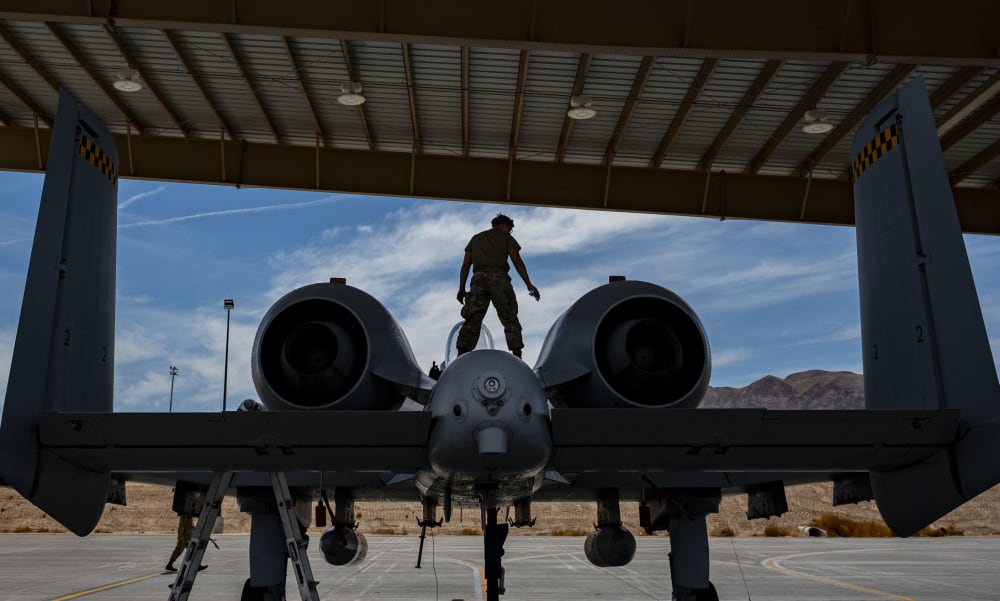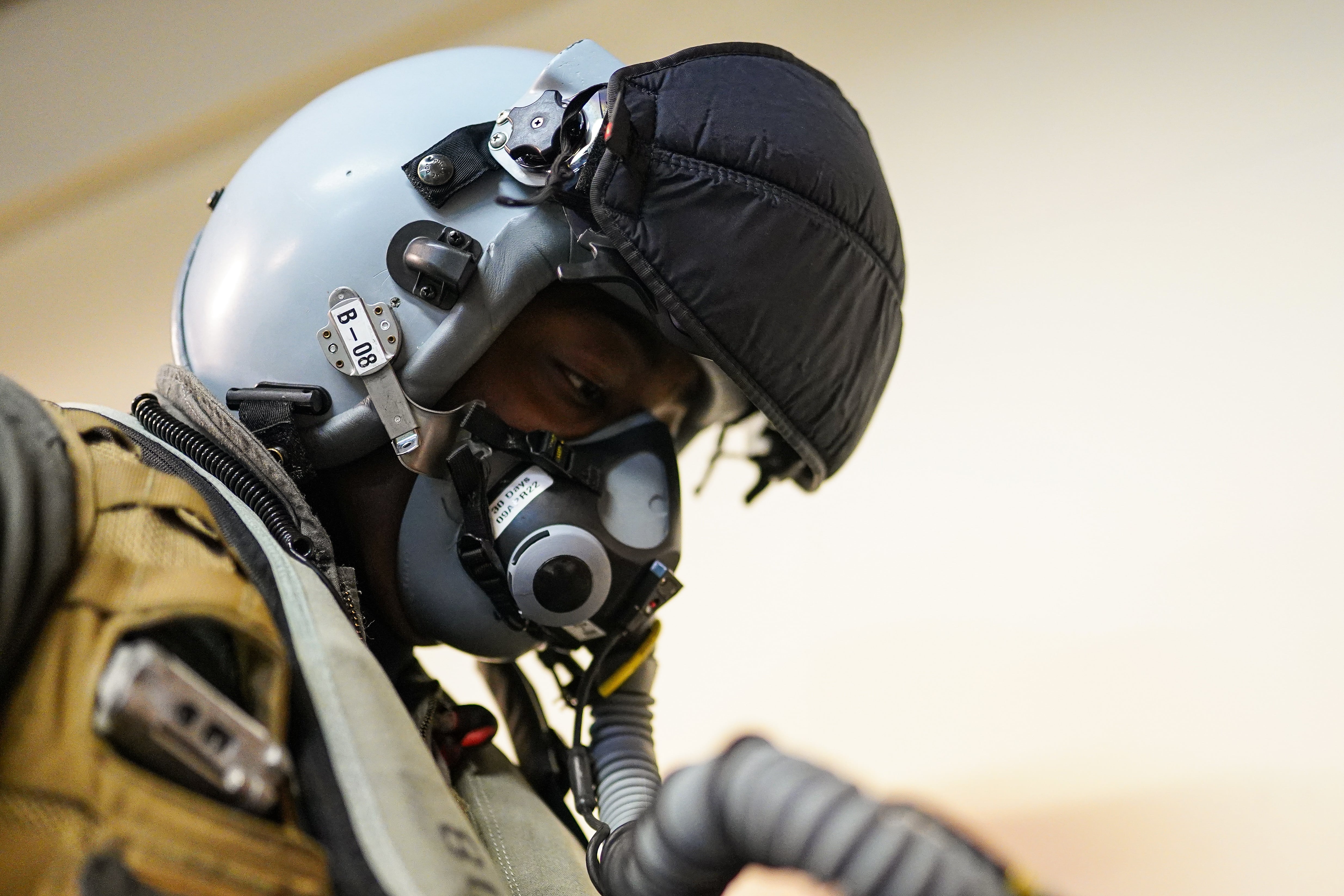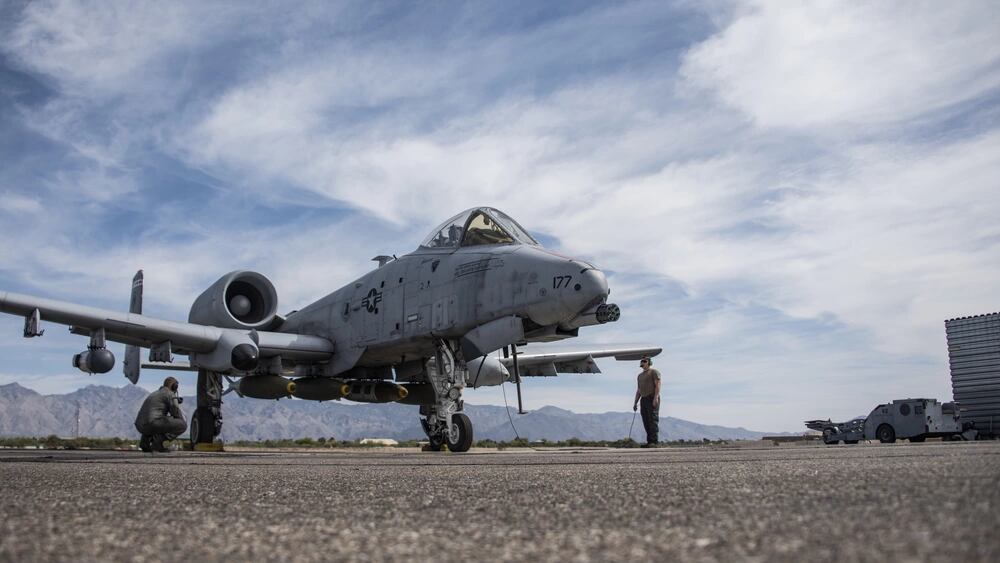A plan to bring new missions to Davis-Monthan Air Force Base, Arizona, is cancelled as the Air Force struggles to get rid of old attack planes.
Last year, the Air Force announced it wanted to retire 42 A-10C Thunderbolt II planes, all but seven of which are housed at the Tucson base. Dumping those jets in 2022 would have made room to bring testing and training for the A-10 and the HH-60 combat search-and-rescue helicopter from Nellis AFB in Nevada to Davis-Monthan.
Then Congress got in the way.
RELATED

“The Air Force is currently reevaluating plans for the future of [Davis-Monthan], after Congress disapproved the retirement of 42 older A-10s in the FY22 National Defense Authorization Act,” Air Combat Command spokesperson Capt. Erica Feehan said Tuesday.
Davis-Monthan is home to A-10Cs, HH-60G Pave Hawk helicopters, HC-130 Hercules transport jets and the EC-130H Compass Call electronic warfare planes. It’s been on the cusp of change for years: Officials have tried and failed multiple times to dump at least some of the Air Force’s 280 or so A-10s in favor of longer-range, stealthy platforms, and are replacing Pave Hawks and Compass Calls with newer models.
The Air Force wanted to move Nellis’s A-10 weapons instructor course and test and evaluation work to Arizona this year. The HH-60G’s advanced tactics course for instructors, test and combat units would join them in 2024.
RELATED

“Davis-Monthan will play a critical role in reshaping U.S. airpower as home to the Air Force’s close air support and rescue Centers of Excellence,” acting Air Force Secretary John Roth said in June 2021. “This realignment will consolidate all A-10 and HH-60 test, training and weapons school activity at one location, allowing airmen in these mission areas to train together for future threats.”
Now, Nellis will keep those units even as it ends other missions. Transferring them was supposed to pave the way for the Las Vegas installation to become the service’s “fifth-generation center of excellence” for jets like the F-35 and F-22 Raptor.
Older F-15C Eagle fighter jets that were used for training at the Air Force Weapons School there have relocated to Eglin AFB, Florida, and to multiple Air National Guard units as test assets. Others left for intensive maintenance or retirement.
In their place, Nellis is bringing on the newer F-15E Strike Eagle jet and growing its F-35 Lightning II fighter fleet. It could receive as many as 17 F-35s by October 2024, including six in the next eight months.
RELATED

The service’s fiscal 2023 budget request also looks to buy about 40 fewer HH-60W Jolly Green II helicopters than planned to free up money for other modernization efforts. If Congress signs off on that proposal, the downsized search-and-rescue fleet could give the Air Force the flexibility to consolidate the helicopters in one place later on.
As for the A-10, the Air Force is now switching gears to instead divest 21 “Warthogs” from Fort Wayne Air National Guard Base, Indiana. It wants to bring on the same number of F-16 Fighting Falcon jets to make that Guard branch more versatile.
“This is a bit of a puzzle,” Air Force Chief of Staff Gen. Charles “CQ” Brown told reporters March 3. “As you do one, there’s an impact … and if one piece of the puzzle doesn’t come together, it stops our forward progress.”
Rachel Cohen is the editor of Air Force Times. She joined the publication as its senior reporter in March 2021. Her work has appeared in the Washington Post, the Frederick News-Post (Md.), Air and Space Forces Magazine, Inside Defense, Inside Health Policy and elsewhere.




